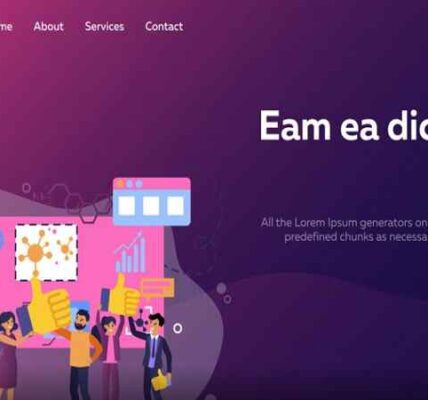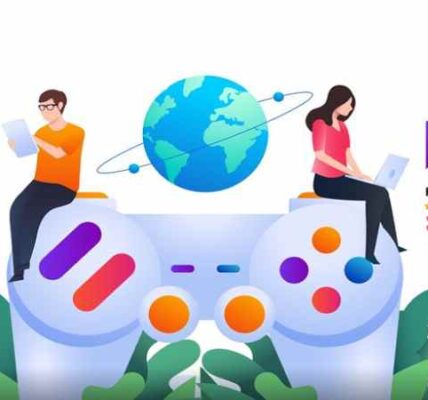Gamification Summit Xendit Work: A Practical Guide to Leveraging Gamification for Business Success
In today’s fast-paced digital world, businesses are constantly seeking innovative ways to engage customers, motivate employees, and drive growth. One of the most effective strategies to achieve these goals is gamification—the application of game-design elements in non-game contexts. The Gamification Summit Xendit Work is a premier event that brings together industry leaders, innovators, and enthusiasts to explore the transformative power of gamification. This article will delve into the practical steps businesses can take to leverage gamification effectively, inspired by insights from the Gamification Summit Xendit Work.
What is Gamification and Why Does It Matter?
Gamification is the process of integrating game mechanics—such as points, badges, leaderboards, and challenges—into everyday activities to motivate participation, engagement, and loyalty. It taps into the human desire for competition, achievement, and recognition, making it a powerful tool for businesses across industries.
The Gamification Summit Xendit Work highlights how gamification can be applied in various contexts, including customer engagement, employee training, and product development. By incorporating gamification into your business strategy, you can:
- Enhance customer loyalty: Reward customers for repeat purchases or referrals.
- Boost employee productivity: Create friendly competitions to motivate teams.
- Improve learning outcomes: Make training programs more interactive and engaging.
- Drive user adoption: Encourage users to explore new features or products.
Practical Steps to Implement Gamification in Your Business
1. Define Clear Objectives
Before diving into gamification, it’s crucial to identify what you want to achieve. Are you looking to increase customer engagement, improve employee performance, or drive sales? The Gamification Summit Xendit Work emphasizes the importance of setting SMART (Specific, Measurable, Achievable, Relevant, Time-bound) goals to ensure your gamification strategy aligns with your business objectives.
Example: If your goal is to increase customer retention, you might create a loyalty program where customers earn points for every purchase, which can be redeemed for discounts or exclusive rewards.
2. Understand Your Audience
Gamification works best when it resonates with your target audience. Take the time to understand their preferences, motivations, and pain points. The Gamification Summit Xendit Work showcases how businesses can use data analytics and user feedback to design gamified experiences that truly engage their audience.
Example: If your audience is competitive, leaderboards and challenges might be effective. If they value collaboration, consider team-based activities or shared rewards.
3. Choose the Right Game Mechanics
Not all game mechanics are created equal. The key is to select elements that align with your objectives and audience. Common gamification mechanics include:
- Points: Reward users for completing specific actions.
- Badges: Recognize achievements and milestones.
- Leaderboards: Foster competition by ranking participants.
- Challenges: Encourage users to complete tasks within a set timeframe.
- Levels: Provide a sense of progression and accomplishment.
At the Gamification Summit Xendit Work, experts recommend starting simple and gradually introducing more complex mechanics as your audience becomes more engaged.
4. Integrate Gamification into Existing Processes
Gamification should complement, not disrupt, your existing workflows. Whether you’re adding gamified elements to a mobile app, a training program, or a marketing campaign, ensure the experience is seamless and intuitive.
Example: If you’re implementing gamification in employee training, integrate it into your learning management system (LMS) so employees can track their progress and earn rewards without switching platforms.
5. Leverage Technology
Technology plays a pivotal role in gamification. From mobile apps to AI-driven analytics, the right tools can enhance the user experience and provide valuable insights. The Gamification Summit Xendit Work highlights how companies like Xendit are using technology to create immersive gamified experiences.
Example: Use a platform like Xendit to automate reward distribution or track user engagement in real-time.
6. Test and Iterate
Gamification is not a one-size-fits-all solution. It’s essential to test your gamified experiences and gather feedback to identify areas for improvement. The Gamification Summit Xendit Work encourages businesses to adopt a continuous improvement mindset, using data to refine their strategies over time.
Example: Run A/B tests to compare different gamification mechanics and determine which ones resonate most with your audience.
7. Measure Success
To evaluate the effectiveness of your gamification strategy, establish key performance indicators (KPIs) that align with your objectives. Common KPIs include:
- Engagement rates: How often are users interacting with the gamified elements?
- Retention rates: Are users returning to your platform or product?
- Conversion rates: Are gamified incentives driving desired actions, such as purchases or sign-ups?
The Gamification Summit Xendit Work emphasizes the importance of tracking these metrics to demonstrate ROI and justify further investment in gamification.
Real-World Examples from the Gamification Summit Xendit Work
The Gamification Summit Xendit Work features inspiring case studies from businesses that have successfully implemented gamification. Here are a few examples:
1. Xendit’s Gamified Payment Solutions
Xendit, a leading payment gateway, has integrated gamification into its platform to encourage users to explore new features and complete transactions. By offering rewards for specific actions, such as setting up recurring payments or referring friends, Xendit has increased user engagement and retention.
2. Employee Training at a Global Retailer
A global retailer showcased at the Gamification Summit Xendit Work used gamification to transform its employee training program. By incorporating quizzes, challenges, and leaderboards, the company saw a 40% increase in training completion rates and a significant improvement in employee performance.
3. Customer Loyalty Programs
Several e-commerce businesses have leveraged gamification to create compelling loyalty programs. By allowing customers to earn points for purchases, reviews, and social media shares, these companies have built stronger relationships with their customers and driven repeat business.
Best Practices for Gamification Success
To ensure your gamification efforts yield the desired results, keep the following best practices in mind:
- Keep it simple: Avoid overwhelming users with too many mechanics or rules.
- Make it fun: Focus on creating an enjoyable experience that users will want to return to.
- Be transparent: Clearly communicate how users can earn rewards and what they can expect in return.
- Stay relevant: Regularly update your gamified experiences to keep them fresh and engaging.
Conclusion: Unlocking the Power of Gamification
The Gamification Summit Xendit Work serves as a testament to the transformative potential of gamification. By following the practical steps outlined in this article, businesses can harness the power of gamification to drive engagement, loyalty, and growth. Whether you’re a startup or an established enterprise, now is the time to explore how gamification can elevate your business to new heights.
As you embark on your gamification journey, remember to stay informed, experiment with different approaches, and continuously refine your strategy based on user feedback and data. With the right mindset and tools, you can create gamified experiences that not only captivate your audience but also deliver tangible results for your business.




